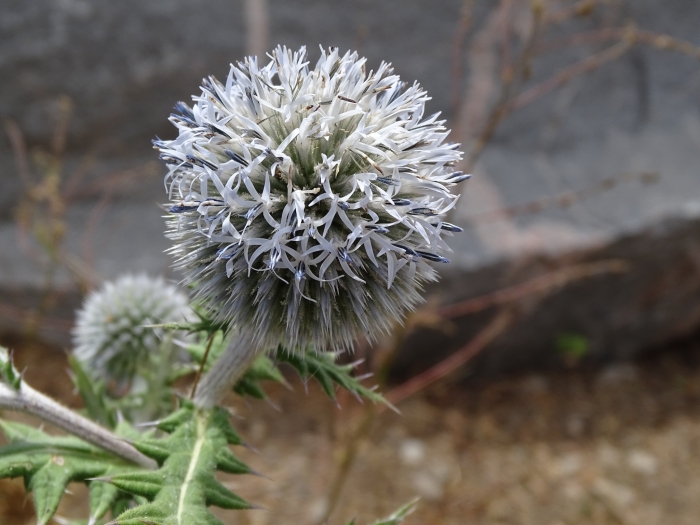Great Globethistle
(Echinops sphaerocephalus)
Great Globethistle (Echinops sphaerocephalus)
/
/

Reuven Martin
Public Domain
























































Estimated Native Range
Summary
The Great Globethistle is valued for its unique spherical flower heads and architectural form, making it a striking addition to borders, wildflower meadows, and cottage gardens. It thrives in full sun and requires medium amounts of water, preferring well-drained soils. While it is generally low-maintenance, it can spread aggressively if not managed, potentially becoming a nuisance in some gardens. To prevent unwanted spread, deadhead spent flowers before they set seed. There are no major disease problems associated with this plant, but it can occasionally suffer from root rot in poorly drained soils.CC BY-SA 4.0
Plant Description
- Plant Type: Herb
- Height: 2-3 feet
- Width: 2-3 feet
- Growth Rate: Moderate
- Flower Color: White, White, Blue
- Flowering Season: Summer
- Leaf Retention: Deciduous
Growth Requirements
- Sun: Full Sun
- Water: Medium
- Drainage: Medium
Common Uses
Bee Garden, Bird Garden, Butterfly Garden, Deer Resistant, Drought Tolerant, Low Maintenance, Rabbit Resistant, Salt Tolerant, Showy Flowers, Street Planting
Natural Habitat
Native to open grasslands, meadows, and light woodlands across Europe and Asia
Other Names
Common Names: Common Globe-Thistle, Globe-Thistle, Great Globe-Thistle, Great Globe Thistle, Globe Thistle, Glandular Globe Thistle, Fligetbladet Tidselkugle, Fligbladet Tidselkugle, Gewöhnliche Kugeldistel, Drüsige Kugeldistel
Scientific Names: , Echinops sphaerocephalus, Echinops viscosus, Echinops cirsiifolius, Echinops macedonicus, Echinops rochelianus var. cirsiifolius, Echinops setaceofimbriatus, Echinops sphaerocephalus f. sphaerocephalus, Echinopus major, Echinopus sphaerocephalus,
GBIF Accepted Name: Echinops sphaerocephalus L.